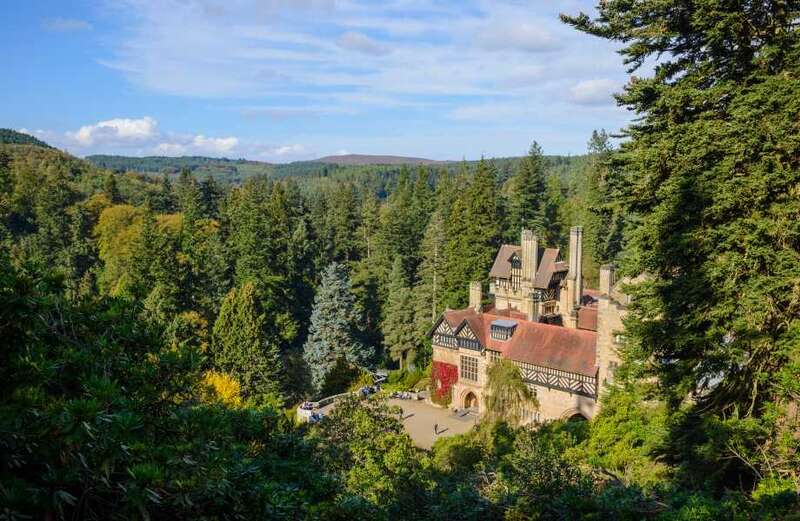THE English countryside is home to some spectacular tourist attractions, including one that has been described as "enchanted" by those who have visited.
In the hills of Rothbury in Northumberland, sits an old Victorian home, surrounded by acres of stunning landscapes, gorges and forests.



Cragside was once the home of scientist and inventor William Armstrong, but has been open to the public since 1979, who shaped the building and the surrounding land with his wife Lady Margaret Armstrong.
It was described in Victorian periodical The World as "the palace of a modern magician" while the Pevsner Architectural Guide for Northumberland called it "the most dramatic Victorian mansion in the North of England".
The ornate home is surrounded by "man-made lakes, foaming waterfalls, and swathes of rhododendron", as part of a "1000-acre fantasy mountain landscape" according to Visit Northumberland.
 I'm a property expert - my guess for the cheapest time to buy a home this year
I'm a property expert - my guess for the cheapest time to buy a home this year
Visiting families can go for a walk through the Pinetum, where they will discover a collection of non-native coniferous trees, including some of the tallest of their kind in the UK that tower overhead.
The trees were selected especially for their size, with the Armstrongs wanting to set their home with the most dramatic surroundings possible.
For youngsters, an adventure playground can be tackled, as can the labyrinth - a twisting maze of made from rhododendrons.
Kids can search its many pathways for William the wizard, the story-teller's chair and Nelly's Den right at the centre.
Next to the Pinetum is the gorge, a "spectacular craggy ravine with tumbling waterfalls" according to the National Trust.
Water from the Debdon Burn flows into the Coquet River along this route, but the Armstrongs increased the waterflow to make the valley more exciting.
Rocks and boulders were specifically put in place to create "an impressive cascade to add further drama to an already extraordinary landscape".
For those looking for a more relaxed atmosphere, a trip to the Rock Garden might be in order, with flowering rhododendrons adding a colourful punch each summer.
Meanwhile the Formal Garden has been labelled "a three-tiered masterpiece" with a loggia and an ornate quatrefoil pool on the Italian Terrace.
There's also an Orchard House and a huge gothic-revival Clock Tower, looking out of the coquet valley below in the grounds of the home.
 Inside Camilla's £850k 'guilty pleasure' country pad - and Charles 'hates' it
Inside Camilla's £850k 'guilty pleasure' country pad - and Charles 'hates' it
There's also plenty to see inside the house.
Visit Northumberland describe it as being "filled with Victorian gadgets for efficient and modern living" with rooms like the Library showing off the genius of the Armstrongs.
In there, four of the inventor Joseph Swan’s incandescent lamps can be found, all originally powered by a hydroelectricity system installed by William Armstrong, using the man made lakes on the property.
Other interesting rooms include the Kitchen, the Galley and the Owl Suite, where in 1884 the Prince and Princess of Wales – the future King Edward VII and Queen Alexandra - stayed.
The pair were drawn to the estate by tales of the home's luxuries, including hot running water and central heating.
A couple of people suitably impressed by their visit to Cragside were Tiktokers Harry and Lydia (@thenomadsyouknow).
In a video, they labelled the estate one of the most unique experiences in the UK, adding that it's a "stunning period house, located in Northumberland, tucked away in an enchanted forest."
Their followers agreed, with one commenting: "Stunning. Such a beautiful part of the country."
Meanwhile, this town in Northumberland has dolphins and part of Harry Potter was filmed there.
And these are some of the most tranquil staycation spots in the country.
































